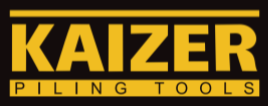Introduction to Modern Pile Foundations
Pile foundations have evolved significantly in construction technology. Traditionally, precast piles dominated the market, including reinforced concrete square piles, prestressed concrete piles, and steel pipe piles, with some prestressed concrete piles exceeding 70 meters in length. In recent years, cast-in-place piles (bored piles) have gained prominence, utilizing techniques such as impact drilling, rotary drilling, and manual excavation. Large-diameter bored piles are increasingly favored, alongside innovative methods like drilling grouting pile formation. Additionally, advancements in minimizing environmental impact and quality inspection of bored piles have been notable.
Structure and Classification of Pile Foundations
A pile foundation is a deep foundation system consisting of pile elements and a pile cap connecting the pile heads.
- Low-cap pile foundation: The entire pile is embedded in soil, with the cap in contact with the ground. Commonly used in buildings.
- High-cap pile foundation: The upper part of the pile is exposed, with the cap elevated above ground. Typical in bridges and harbor engineering.
1. Classification by Load-Bearing Mechanism
- End-bearing piles: Transfer load to a firm stratum (rock or dense soil). Installation focuses on penetration resistance.
- Friction piles: Rely on side friction and end resistance in soft soil. Installation prioritizes depth control.
2. Classification by Soil Displacement
- Non-displacement piles: Formed by drilling (dry method, slurry-supported).
- Partial-displacement piles: Include H-piles, open-ended steel pipes, and pre-drilled precast piles.
- Displacement piles: Driven piles (e.g., closed-ended pipes, solid precast concrete).
3. Classification by Construction Method
- Precast piles: Driven into the ground via hammering, pressing, or vibration.
- Cast-in-situ piles: Formed by excavating, placing reinforcement, and pouring concrete.
Precast Pile Construction Methods
1. Hammer-Driven Piling (Impact Method)
- Process: Uses a pile hammer to drive piles through impact force.
- Equipment: Includes pile hammer, pile frame, and power system.
- Advantages: Fast, versatile.
- Disadvantages: Noise, vibration (restricted in urban areas).
Key Steps:
- Site preparation (clearing, leveling, drainage).
- Pile sequencing (center-outward for dense piles).
- “Low-lift, heavy blow” technique to reduce rebound.
2. Static Pressure Piling
- Process: Uses hydraulic jacks to press piles into soft soil.
- Advantages: Quiet, minimal vibration (ideal for cities).
- Joint methods: Welding, flange bolts, sulfur mortar anchoring.
3. Vibratory Piling
- Process: High-frequency vibration liquefies soil for easier penetration.
4. Water-Jet Piling
- Process: Combines water jets with hammering for hard strata.
- Note: Jets stop near final depth to ensure bearing capacity.
Bored Pile Construction Methods
1. Dry Process Rotary Drilling
- Equipment: Auger drill (spiral boring).
- Suitable for: Stable, dry soils (no groundwater).
- Steps: Drill → Clear debris → Insert rebar → Pour concrete.
2. Slurry-Supported Bored Piles
- Process: Uses bentonite slurry to stabilize boreholes.
- Equipment: Diaphragm wall grab, rotary drills.
- Key Steps:
- Install guide casing (2m height).
- Drill with slurry circulation (removes cuttings).
- Clean hole → Insert cage → Pour underwater concrete.
3. Cast-in-Place Driven Piles (Cased Piles)
- Process: Drive a steel casing, place concrete, and extract casing.
- Variations:
- Single-stage extraction: Gradual pullout with vibration.
- Re-driving (repeater method): Enhances compaction.
4. Manual Excavation (Large-Diameter Piles)
- Process: Hand-dig shafts with shotcrete or precast segmental linings.
- Advantages: Inspectable bore, high capacity.
- Safety: Ventilation, shoring, and edge protection critical.


